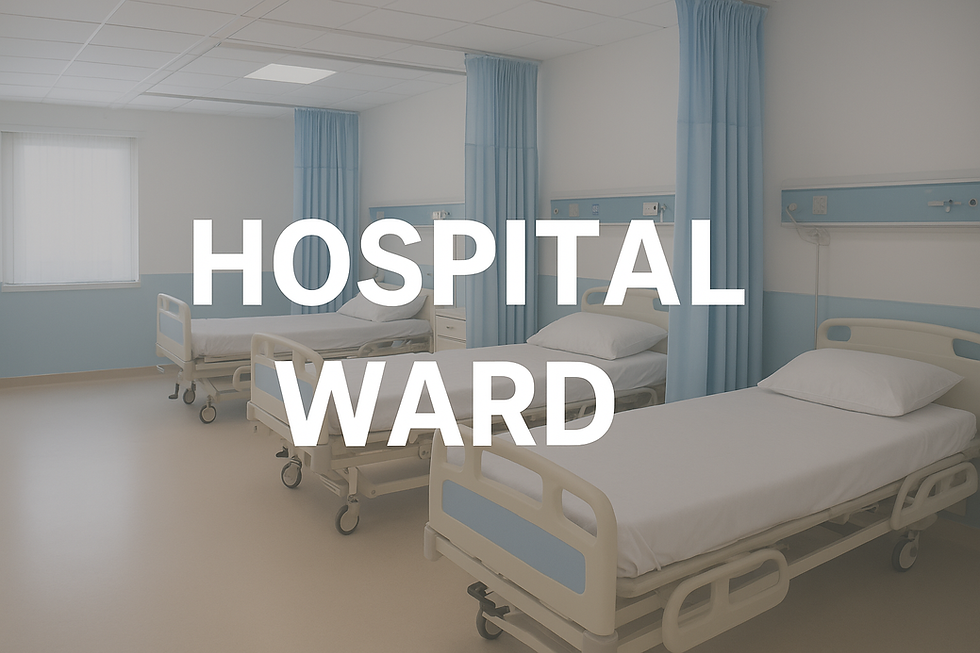Streamlining surgical prep with multi-tier OT trolleys
- Dhruv Dixit
- Jun 27
- 4 min read
Every second counts when the pressure is high, especially in surgical environments. When a surgery room hums with preparatory activity, anaesthetists lining up, instruments sterilising, monitors buzzing, the last thing staff need is cluttered trays or misplaced tools.
Helping with easing the hassle in tough times, the multi-tier OT trolley, a deceptively simple innovation, transforms this surgical readiness from a chaotic structure to a smooth arrangement.
These trolleys, featuring multiple shelves, drawer compartments, and purposeful design, have emerged as a non-negotiable fixture in contemporary operating rooms. They are the quiet backbone of surgical prep, offering structured storage, accessible layouts, and mobility that match the fluid demands of the surgical team.
How multi-tier OT trolleys help with improving surgical efficiency, ergonomics, and supporting patient safety?

Multi-tier OT Trolleys Ensure Organised Access for Critical Instruments
In a major orthopaedic surgery where the need for specific clamps, retractors, suction tips, and suture kits arises in rapid succession, a single-tier tray won’t cut it; items get layered, hidden, or confused. Multi-tier OT trolleys resolve this by offering a vertical organisation that mirrors the order of clinical usage. Each shelf or drawer holds a predetermined category, sterile tools, consumables, and disposable items, keeping everything visible, within arm’s reach, and logically placed.
Avoiding mix-ups is more than convenience; it’s a matter of safety. Misreading an instrument or delaying its passing can prolong anaesthesia times or introduce errors. A well-stocked multi-tier trolley places everything in its rightful zone, empowering surgical teams to focus on precision rather than pursuit.
Multi-tier OT Trolley Ensures Efficiency Through Clear Zoning and Layout
Surgical protocols follow a structure, which includes preparation, incision, monitoring, and closure. Multi-tier trolleys can be arranged to reflect that flow. Lower tiers offer heavy items like cautery machines or irrigation units; upper tiers hold small consumables like syringes or swabs. When drawers open and trays flip in sequence, staff spend less time searching and more time acting. In fast-paced scenarios like trauma surgeries or transplant cases, that added second becomes invaluable. Streamlined layouts reduce cognitive load and reduce room turnover times between procedures, helping ORs maintain scheduling targets.
Multi-tier OT Trolley is Where Compact Storage Meets Flexibility
OR space is at a premium. Unlike single trays that require pushing off equipment or hovering awkwardly, multi-tier trolleys maximise vertical storage in a smaller footprint. That frees up floor area and improves movement flow around the operating table.
Designed with swivel casters and locking brakes, the trolleys can glide in from sterile zones, nest close to staff, and be repositioned as needed, without triggering alarms or tightening sterile field margins. Once the surgery concludes, they can be wheeled out effortlessly and swapped for a standby unit, minimising downtime.
Adapts to Various Surgical Specialities

A cardiology OR is not the same as a neurosurgical suite. Each has its own inventory and tool preferences. With multi-tier designs, trolleys become reconfigurable for speciality settings. Tray depths can be adjusted, drawer dividers swapped, and accessory hooks added or removed. Suddenly, the same trolley framework can serve a range of surgical disciplines, from urology to vascular, from ear-nose-throat to pediatric surgery, without requiring multiple benchtop purchases.
This adaptability reduces capital expenditure while maintaining the consistency of staff training. Nurses and techs learn one system that applies across cases, improving familiarity and minimising chance-driven errors.
Multi-tier OT Trolley Ensures Safer Workflow with Fewer Movements
Every time a nurse or tech must lean over or reach far for a tool, ergonomic strain and cross-contamination risk increase. Multi-tier trolleys keep supplies within optimal reach zones, mid-chest to waist height, where tools can be accessed without bending or twisting. This carefully designed “work envelope” reduces back injuries and maintains sterile barriers. Furthermore, robust locking wheels prevent slipping during handling. The trolley becomes a stable, intuitive extension of the surgical workflow.
Ensures Rapid Turnover and Efficient Cleaning
Between surgeries, OR staff must clear used gear, wipe surfaces, and restock. Multi-tier trolleys speed this up: remove a single tray to scrub, swap in a clean one, and you’re ready within minutes. No need to dismantle fixed racks or temporarily shift tools to carts elsewhere.
Constructed from stainless steel or antimicrobial materials, these trolleys withstand high-pressure cleaning. Smooth corners, sealed joints, and standardised components mean fewer hidden crevices, reducing infection hotspots while shortening cleaning cycles.
Enhances Multi‑Team Collaboration
In multidisciplinary procedures, say, a combined vascular and plastic reconstruction, the trolley becomes a shared staging area. Plastic surgeons can open upper trays, while vascular teams access middle sections. Built-in workstation boards or mountable lamp arms allow real-time marking or documentation on the trolley itself, bringing teams together without spatial disruption.
This cross-speciality compatibility empowers fluid role transitions and enables everyone to find and use what they need, when they need it.
Promotes Training and Support to OR Staff
New surgical techs and nurses need to learn instrument placement, aseptic handling, and procurement points. Multi-tier trolleys facilitate this by offering standardised zones to reinforce best practices, such as tray 1 for prep, tray 2 for surgery, and tray 3 for closure.
This consistency helps onboarding, reduces error rates, and supports a safer environment overall. Staff can confidently know where things are or where things should be, because the layout mirrors the clinical sequence.
Why Aslams Is Your Partner for Multi‑Tier OT Trolleys
At Aslams, we recognise that surgical readiness isn’t just a checklist, it’s a system. Our multi-tier OT trolleys are manufactured from durable, infection-resistant materials, equipped with reinforced frames, modular drawer systems, and clinical-grade mobility mechanisms.
Each trolley is built after consulting OR teams to ensure sizes, tray divisions, and mobility match your surgical style, whether high-throughput procedures, trauma setups, or precision microsurgery. And with consistent build quality and standardised maintenance parts, Aslams has established its name with trolleys that are engineered for real-world surgical environments.




Comments